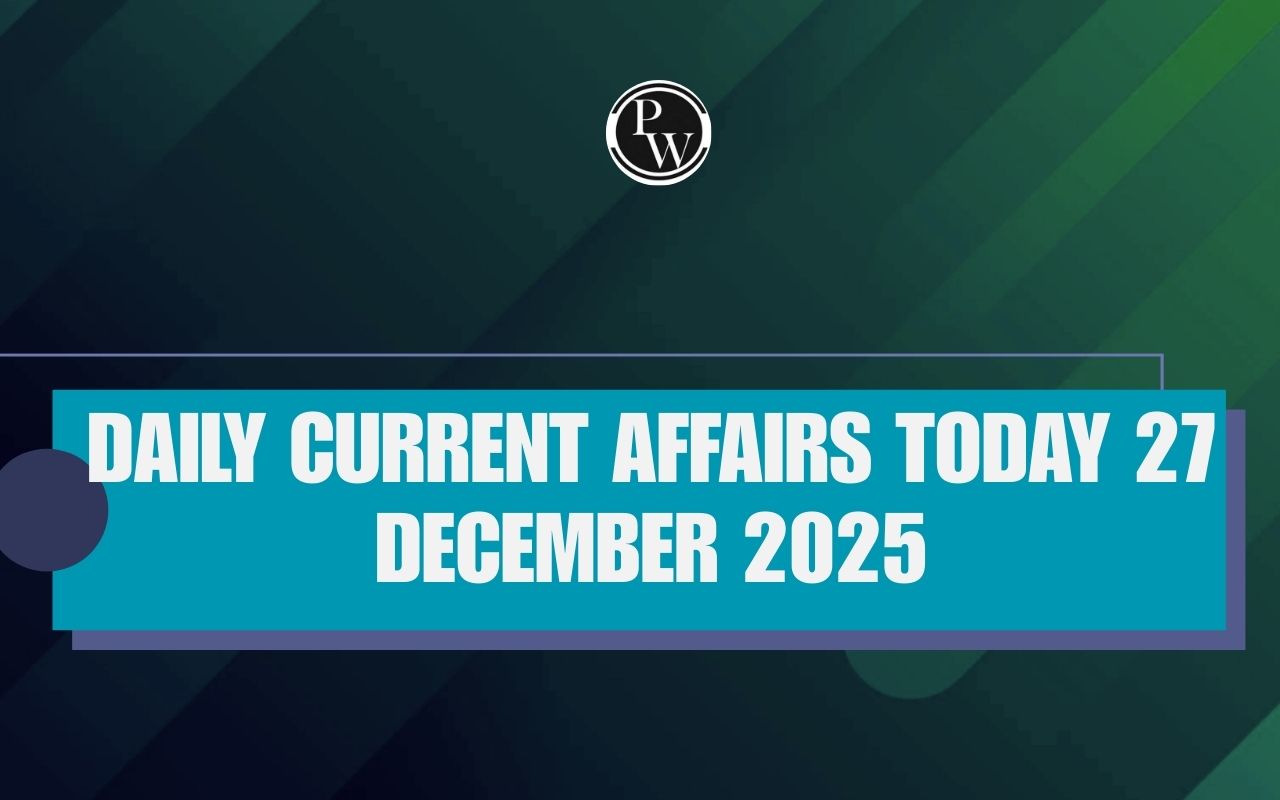
Endogenic Processes
Endogenic processes, or internal geological processes, originate from within the Earth and are driven by internal heat and gravitational forces. These processes shape the Earth’s surface over geological timescales and are responsible for the creation of mountains, earthquakes, volcanic activity, and the formation of various landforms. Understanding endogenic processes is crucial for comprehending the dynamic nature of our planet. This article looks into the types, causes, and effects of endogenic processes in a simplified manner.Types of Endogenic Processes
Types of Endogenic Processes are as follows:Tectonic Processes
Plate Tectonics: The theory of plate tectonics explains the movement of the Earth's lithospheric plates. These plates float on the semi-fluid asthenosphere and move due to convection currents in the mantle.
- Divergent Boundaries: Plates move apart, creating new crust as magma rises to the surface, forming mid-ocean ridges and rift valleys.
- Convergent Boundaries: Plates move towards each other, leading to subduction zones where one plate is forced under another, creating mountains, volcanic arcs, and oceanic trenches.
- Transform Boundaries: Plates slide past each other horizontally, causing earthquakes along faults like the San Andreas Fault in California.
Mountain Building (Orogenesis): Mountains are primarily formed through the collision of tectonic plates. The pressure and force from these collisions fold, fault, and uplift the Earth's crust.
- Fold Mountains: Formed by the bending of rock layers due to compressional forces (e.g., the Himalayas).
- Fault-Block Mountains: Formed by the breaking and tilting of the crust along faults (e.g., the Sierra Nevada).
Volcanic Processes
Volcanism involves the eruption of magma onto the Earth's surface, forming volcanic landforms.Types of Volcanoes
- Shield Volcanoes: Broad, gently sloping volcanoes formed by low-viscosity basaltic lava (e.g., Mauna Loa in Hawaii).
- Stratovolcanoes: Steep, conical volcanoes formed by alternating layers of lava flows, ash, and volcanic rocks (e.g., Mount Fuji in Japan).
- Cinder Cone Volcanoes: Small, steep-sided volcanoes formed by the accumulation of volcanic debris around a single vent (e.g., Paricutin in Mexico).
Volcanic Eruptions
Eruptions can vary in intensity, from effusive (flowing lava) to explosive (violent ejections of ash and rock). Factors influencing eruption style include magma composition, gas content, and pressure.Seismic Processes
Earthquakes: Earthquakes are sudden, violent shaking of the ground caused by the release of energy stored in the Earth's crust. This energy release occurs along faults, fractures where rocks have moved.
- Focus and Epicenter: The focus is the point within the Earth where the earthquake originates, and the epicenter is the point directly above it on the surface.
- Seismic Waves: Energy from earthquakes travels in waves. Primary (P) waves are compressional, Secondary (S) waves are shear, and Surface waves cause the most damage.
Causes of Earthquakes:
- Tectonic Activity: Movement of tectonic plates is the primary cause.
- Volcanic Activity: Eruptions can trigger earthquakes.
- Human Activities: Activities like mining, reservoir-induced seismicity from large dams, and geothermal energy extraction can also cause earthquakes.
Causes of Endogenic Processes
Internal Heat: The Earth’s internal heat is generated from the radioactive decay of elements, residual heat from the planet's formation, and the heat generated by the gravitational compression of the Earth's core. This internal heat drives mantle convection, which in turn drives plate tectonics.
Gravitational Forces: The gravitational force within the Earth causes pressure differentials in the crust and mantle. This pressure can lead to rock deformation, folding, faulting, and other tectonic activities. The movement of heavy, dense materials towards the Earth's center and lighter materials towards the surface also contributes to tectonic activity.
Mantle Convection: Convection currents in the mantle are caused by the transfer of heat from the core to the mantle. These currents create a dynamic system where hot material rises towards the crust, cools, and then sinks back down, driving the movement of tectonic plates on the Earth’s surface.
Effects of Endogenic Processes
Landform Creation: Endogenic processes are responsible for creating a variety of landforms, including mountains, valleys, plateaus, and volcanic islands. These landforms are continuously shaped by the movement and interaction of tectonic plates, as well as by volcanic and seismic activities.
Earthquakes: Earthquakes, a direct result of tectonic activity, can cause significant destruction to human settlements, infrastructure, and can trigger secondary hazards such as tsunamis, landslides, and soil liquefaction. Understanding earthquake patterns and zones helps in disaster preparedness and mitigation.
Volcanic Activity: Volcanic eruptions can have both constructive and destructive effects. While they can create new landforms and fertile soils, they can also cause loss of life, destruction of property, and atmospheric changes. Volcanic ash clouds can impact air travel, and volcanic gases can affect climate patterns.
Mineral and Energy Resources: Endogenic processes contribute to the formation of mineral deposits and energy resources. The heat and pressure within the Earth lead to the concentration of minerals, including precious metals like gold and silver, and energy resources such as geothermal energy, oil, and natural gas.
Human Interaction with Endogenic Processes
Hazard Mitigation: Understanding endogenic processes is crucial for mitigating natural hazards. Building codes and land-use planning in earthquake-prone areas, volcanic monitoring systems, and tsunami warning systems are examples of how knowledge of these processes is applied to protect human lives and property.
Resource Exploitation: Humans exploit resources formed by endogenic processes, such as minerals, fossil fuels, and geothermal energy. Responsible extraction and use of these resources are essential to minimize environmental impact and ensure sustainable development.
Engineering and Construction: Knowledge of endogenic processes informs engineering and construction practices, particularly in designing structures that can withstand earthquakes and volcanic eruptions. This includes building earthquake-resistant buildings, designing stable foundations, and planning infrastructure in safe zones.
To succeed in upcoming exams, candidates should consider exploring PW SSC Books We provide high-quality content at an affordable price, including sample papers, mock tests, guidance sessions, and more to ensure aspirants secure their selection. Also, enroll today on SSC Online Coaching to turn your dreams into reality.Endogenic Processes FAQs
1. What are endogenic processes?
2. How do tectonic processes contribute to endogenic activities?
3. What causes volcanic eruptions in endogenic processes?
4. How do endogenic processes impact the Earth's surface?










